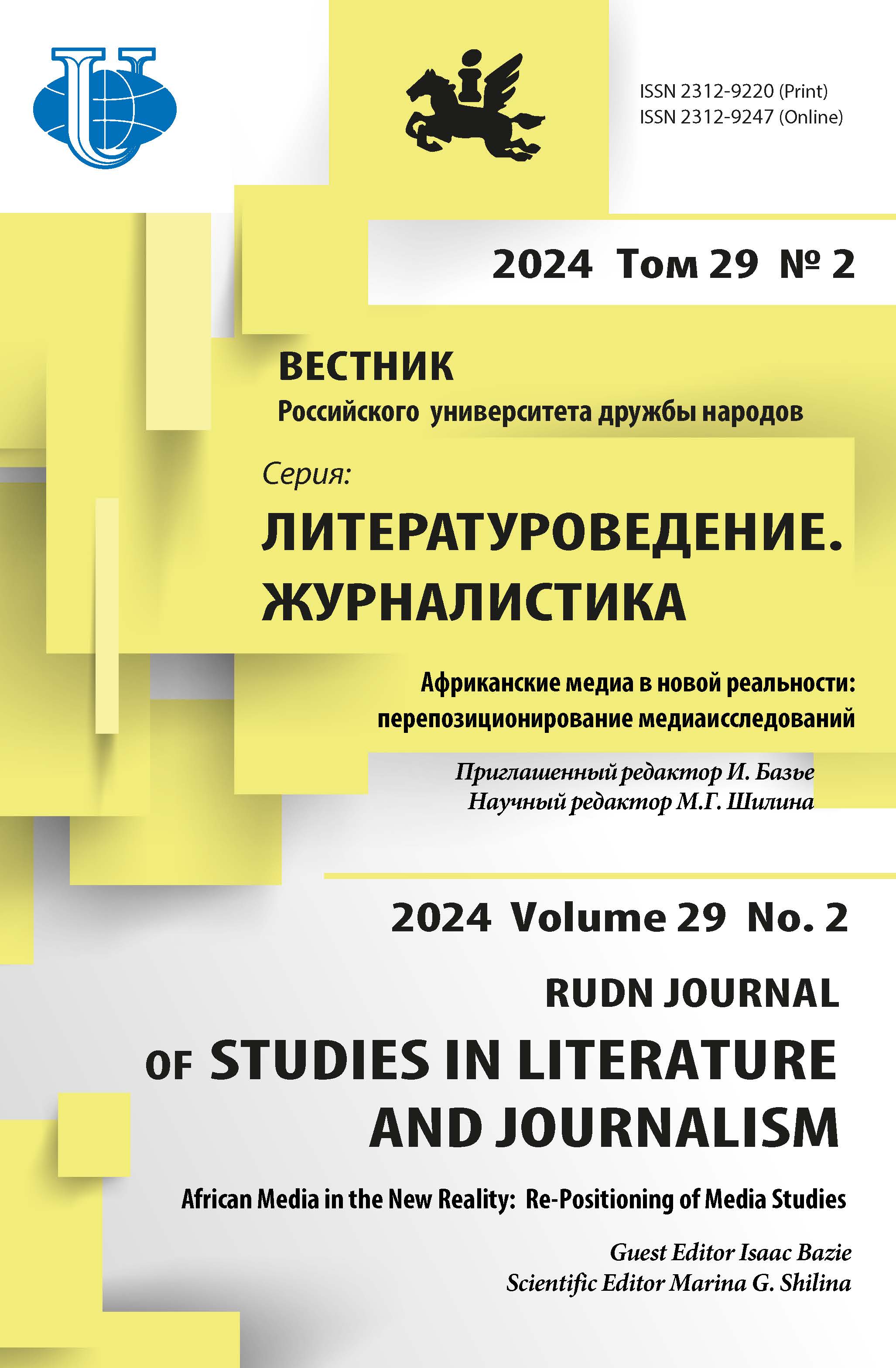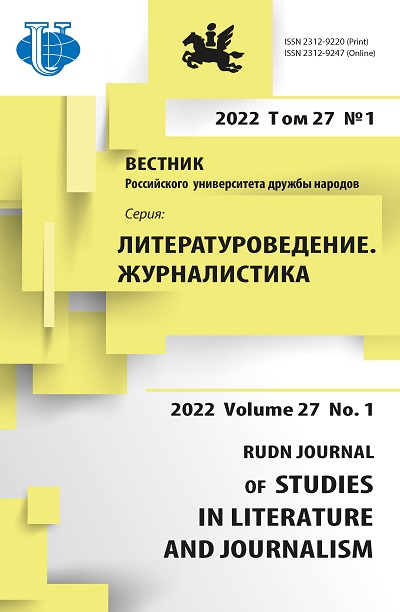Интерпретация стихотворения А.А. Ахматовой «Муза»
- Авторы: Аксёнова А.А.1
-
Учреждения:
- Кемеровский государственный университет
- Выпуск: Том 27, № 1 (2022)
- Страницы: 30-38
- Раздел: Литературоведение
- URL: https://journals.rudn.ru/literary-criticism/article/view/30718
- DOI: https://doi.org/10.22363/2312-9220-2022-27-1-30-38
Цитировать
Полный текст
Аннотация
Раскрытие смысла загадочного диалога между поэтом и Музой в финале произведения мы начнем исходя из последовательного прочтения. Необходимо сразу отметить, что в человеческом и природном мире разделение тьмы и света, сна и бодрствования, праздной жизни и служения отражается в ценностном предпочтении поэтом своей Музы земным почестям, юности и свободе. Это в финале произведения сближает между собой двух поэтов из разных временных сфер: поэт, живущий сейчас, как и поэт эпохи Возрождения, продолжает служить Музе. Муза в этом произведении имеет человекоподобный облик, тело, голос и взгляд. Визуальная подробность образа Музы важна и для лирического героя, и для читателя, поскольку переводит нечто значимое и возвышенное в интимный, личный мир героя. На персональный план коммуникации указывает ценностная и стилистическая оппозиция: «почести» и «милая». Атрибут такой Музы - дудочка (авлос или сиринга в руках богини Эвтерпы) соответствует скорее Пану, чем Аполлону-Кифареду. Поэтому природное состояние мира здесь не враждебно, а, напротив, - репрезентативно в отношении человеческой жизни. В ходе исследования выясняется, что отсылка именно к «Божественной комедии» подтверждается не только очевидным упоминанием Данте в финале, но еще и в самой первой строфе.
Ключевые слова
Об авторах
Анастасия Александровна Аксёнова
Кемеровский государственный университет
Автор, ответственный за переписку.
Email: AA9515890227@yandex.ru
ORCID iD: 0000-0001-5048-6019
преподаватель кафедры русского языка и литературы
Российская Федерация, 650000, Кемерово, ул. Красная, 6Список литературы
- Ахматова А. Собрание сочинений: в 6 т. Т. 1. Стихотворения. 1904-1941 / сост., подгот. текста, коммент: и статья Н.В. Королевой. М.: Эллис Лак, 1998
- Ван Мэнцзяо Образ музы в стихотворениях «Муза» А.С. Пушкина, А.А. Ахматовой и М.С. Петровых // Вестник Российского университета дружбы народов. Серия: Литературоведение. Журналистика. 2020. Т. 25. № 2. С. 287-294
- Данте Алигьери. Божественная комедия / пер. М. Лозинского; Изд. подгот. И.Н. Голенищев-Кутузов. М.: Наука, 1967
- Казарин В.П., Новикова М. А. Ахматова. Данте. Крым (к постановке проблемы) // Вопросы русской литературы. 2014. № 29(86). С. 5-22
- Кихней Л.Г. Функции шекспировских и дантовских мотивов в поэзии Анны Ахматовой // Русская литература: историко-литературный журнал. 2014. № 2. С. 156-176
- Лосев А.Ф. Античная мифология в ее историческом развитии. М.: Государственное учебно-педагогическое издательство министерства просвещения РСФСР (Учпедгиз), 1957
- Меркель Е.В. Антропоморфные образы творчества в поэзии Анны Ахматовой // Пушкинские чтения - 2016. Художественные стратегии классической и новой литературы: жанр, автор, текст: материалы XXI Междунар. науч. конф. / под общ. ред. В.Н. Скворцова; отв. ред. Т.В. Мальцева. СПб.: ЛГУ им. А.С. Пушкина, 2016. С. 162-168
- Мирза М.Н. «Тайны ремесла» А.А. Ахматовой: творчество - природа - муза // Вестник студенческого научного общества ГОУ ВПО «Донецкий национальный университет». 2019. Т. 2. № 11. С. 57-61
- Тюпа В.И. Аналитика художественного: введение в литературоведческий анализ. М.: Лабиринт, РГГУ, 2001
- Хлодовский Р.И. Анна Ахматова и Данте // Тайны ремесла. Ахматовские чтения. Вып. 2. Институт Мировой литературы им. А.М. Горького РАН. М.: Наследие, 1992. С. 75-92
















